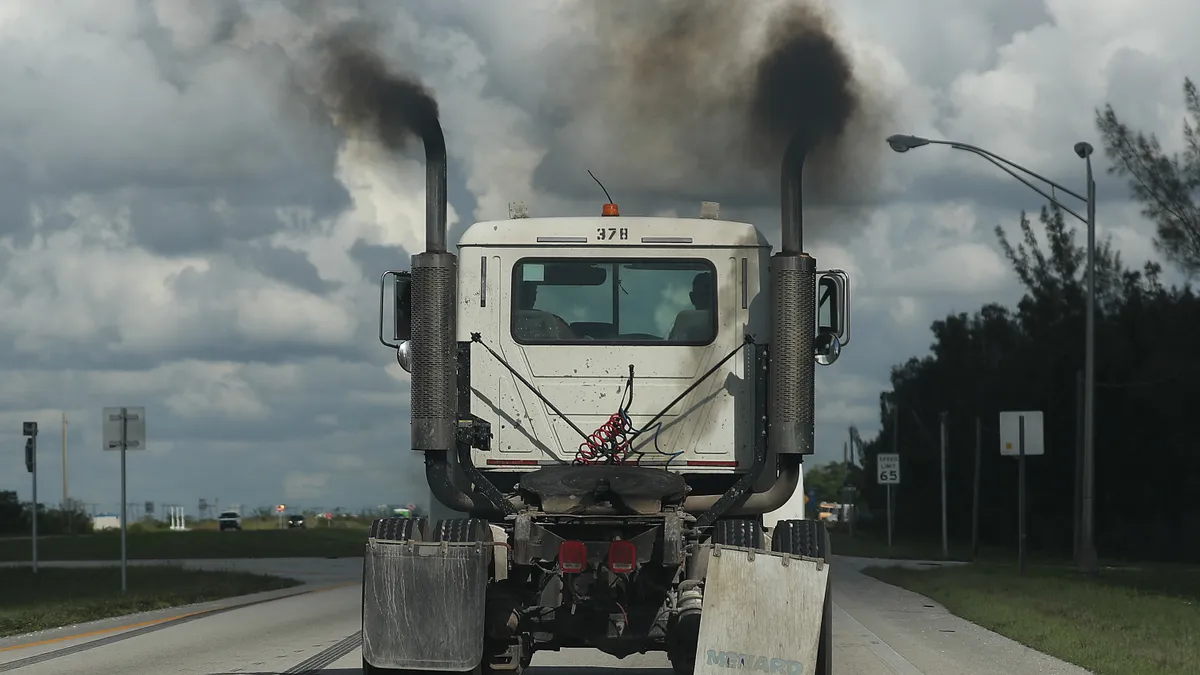The Environmental Protection Agency issued a final rule Tuesday strengthening heavy-duty truck emissions standards, beginning with model year 2027 vehicles.
The updated standards are 80% more stringent than current ones, the agency said.
“This is just the first action under EPA’s Clean Trucks Plan to pave the way toward a zero-emission future,” EPA head Michael Regan said in a statement.
The 1,153-page rule would reduce heavy-duty truck nitrogen oxide, or NOx, emissions by more than 40% by 2040 and more than 50% by 2045, the EPA said. The rule covers a wider range of engine operating conditions than today’s standards, and it requires the standards to be met for longer.
Among other requirements, it also mandates that manufacturers boost anti-tampering measures to ensure emissions reporting is accurate. In addition to health benefits for residents living near truck routes, the rules will increase useful life of governed vehicles by 1.5 to 2.5 times, and will yield emissions warranties that are 2.8 to 4.5 times longer, according to the agency.
Truck manufacturers and others in the industry expressed concern — some apprehensive of the timeline, others downright critical of the agency — following the rule’s announcement.
Jed Mandel, president of the Truck and Engine Manufacturers Association, said in a statement that trucking fleets’ willingness and ability to purchase new, lower-emitting trucks will determine the rule’s success or failure.
Manufacturers have worked collaboratively with the EPA to produce “incredible technological achievements,” Mandel said, “resulting in near-zero levels of NOx and [particulate matter] emissions and improved fuel efficiency from today’s diesel engines.”
“It is clear the rule is very stringent and will be challenging to implement,” Mandel added. “Our members are fully committed to working with the EPA and other stakeholders for its successful implementation.”
American Trucking Associations President and CEO Chris Spear’s statement echoed Mandel’s, noting that while the standards are directed at manufacturers, trucking fleets’ purchasing decisions will determine whether the EPA’s emissions reductions goals are met.
The trucking industry has cut nitrogen oxide emissions by more than 98% since 1988, Spear said. Ongoing progress requires technologically feasible standards and equipment that is affordable and reliable for fleets, he said.
"ATA remains extremely concerned over the potential growth of state patchworks of NOx emission standards that will create havoc for an industry that operates across local, state, and international boundaries,” Spear said. “We hope EPA and the California Air Resources Board will ultimately agree to a uniform, single standard that best achieves our nation’s environmental goals.”
The Owner-Operator Independent Drivers Association views the new rule as the EPA’s latest attempt to put small-business truck drivers out of business, a spokesperson said in an email.
“If small business truckers can’t afford the new, compliant trucks, they’re going to stay with older, less efficient trucks, or leave the industry entirely,” OOIDA President Todd Spencer said in an emailed statement. “Once again, EPA has largely ignored the warnings and concerns raised by truckers in this latest rule.”













